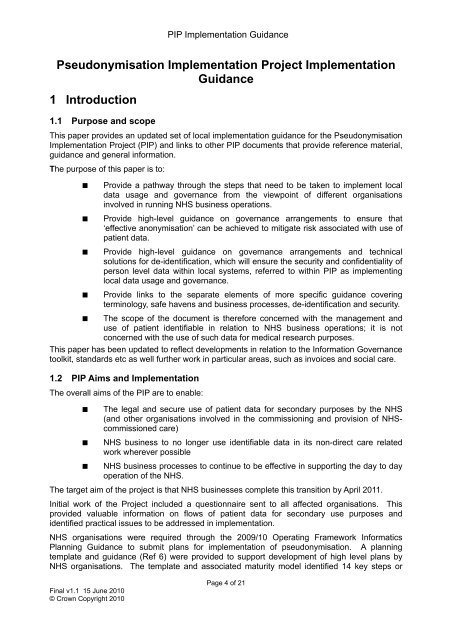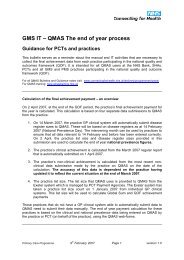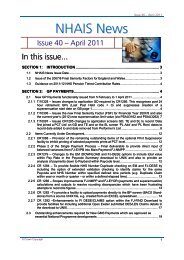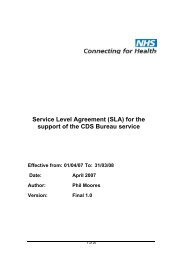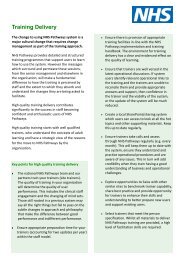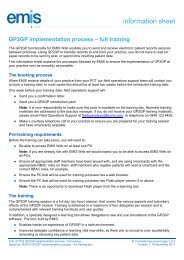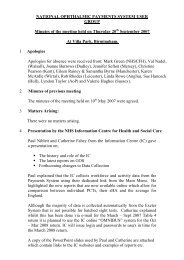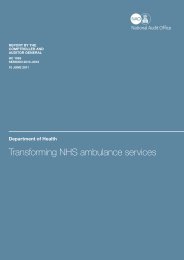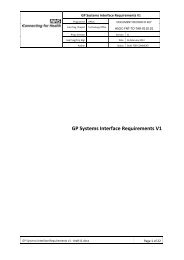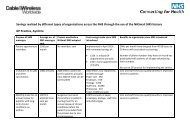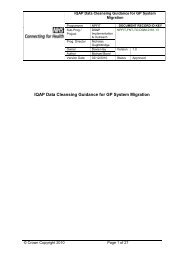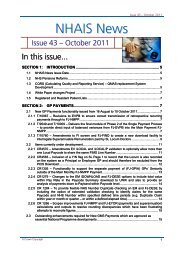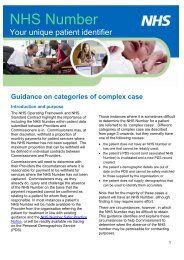Pseudonymisation Implementation Project - NHS Connecting for ...
Pseudonymisation Implementation Project - NHS Connecting for ...
Pseudonymisation Implementation Project - NHS Connecting for ...
You also want an ePaper? Increase the reach of your titles
YUMPU automatically turns print PDFs into web optimized ePapers that Google loves.
PIP <strong>Implementation</strong> Guidance<strong>Pseudonymisation</strong> <strong>Implementation</strong> <strong>Project</strong> <strong>Implementation</strong>Guidance1 Introduction1.1 Purpose and scopeThis paper provides an updated set of local implementation guidance <strong>for</strong> the <strong>Pseudonymisation</strong><strong>Implementation</strong> <strong>Project</strong> (PIP) and links to other PIP documents that provide reference material,guidance and general in<strong>for</strong>mation.The purpose of this paper is to:■■■■■Provide a pathway through the steps that need to be taken to implement localdata usage and governance from the viewpoint of different organisationsinvolved in running <strong>NHS</strong> business operations.Provide high-level guidance on governance arrangements to ensure that‘effective anonymisation’ can be achieved to mitigate risk associated with use ofpatient data.Provide high-level guidance on governance arrangements and technicalsolutions <strong>for</strong> de-identification, which will ensure the security and confidentiality ofperson level data within local systems, referred to within PIP as implementinglocal data usage and governance.Provide links to the separate elements of more specific guidance coveringterminology, safe havens and business processes, de-identification and security.The scope of the document is there<strong>for</strong>e concerned with the management anduse of patient identifiable in relation to <strong>NHS</strong> business operations; it is notconcerned with the use of such data <strong>for</strong> medical research purposes.This paper has been updated to reflect developments in relation to the In<strong>for</strong>mation Governancetoolkit, standards etc as well further work in particular areas, such as invoices and social care.1.2 PIP Aims and <strong>Implementation</strong>The overall aims of the PIP are to enable:■■■The legal and secure use of patient data <strong>for</strong> secondary purposes by the <strong>NHS</strong>(and other organisations involved in the commissioning and provision of <strong>NHS</strong>commissionedcare)<strong>NHS</strong> business to no longer use identifiable data in its non-direct care relatedwork wherever possible<strong>NHS</strong> business processes to continue to be effective in supporting the day to dayoperation of the <strong>NHS</strong>.The target aim of the project is that <strong>NHS</strong> businesses complete this transition by April 2011.Initial work of the <strong>Project</strong> included a questionnaire sent to all affected organisations. Thisprovided valuable in<strong>for</strong>mation on flows of patient data <strong>for</strong> secondary use purposes andidentified practical issues to be addressed in implementation.<strong>NHS</strong> organisations were required through the 2009/10 Operating Framework In<strong>for</strong>maticsPlanning Guidance to submit plans <strong>for</strong> implementation of pseudonymisation. A planningtemplate and guidance (Ref 6) were provided to support development of high level plans by<strong>NHS</strong> organisations. The template and associated maturity model identified 14 key steps orFinal v1.1 15 June 2010© Crown Copyright 2010Page 4 of 21


